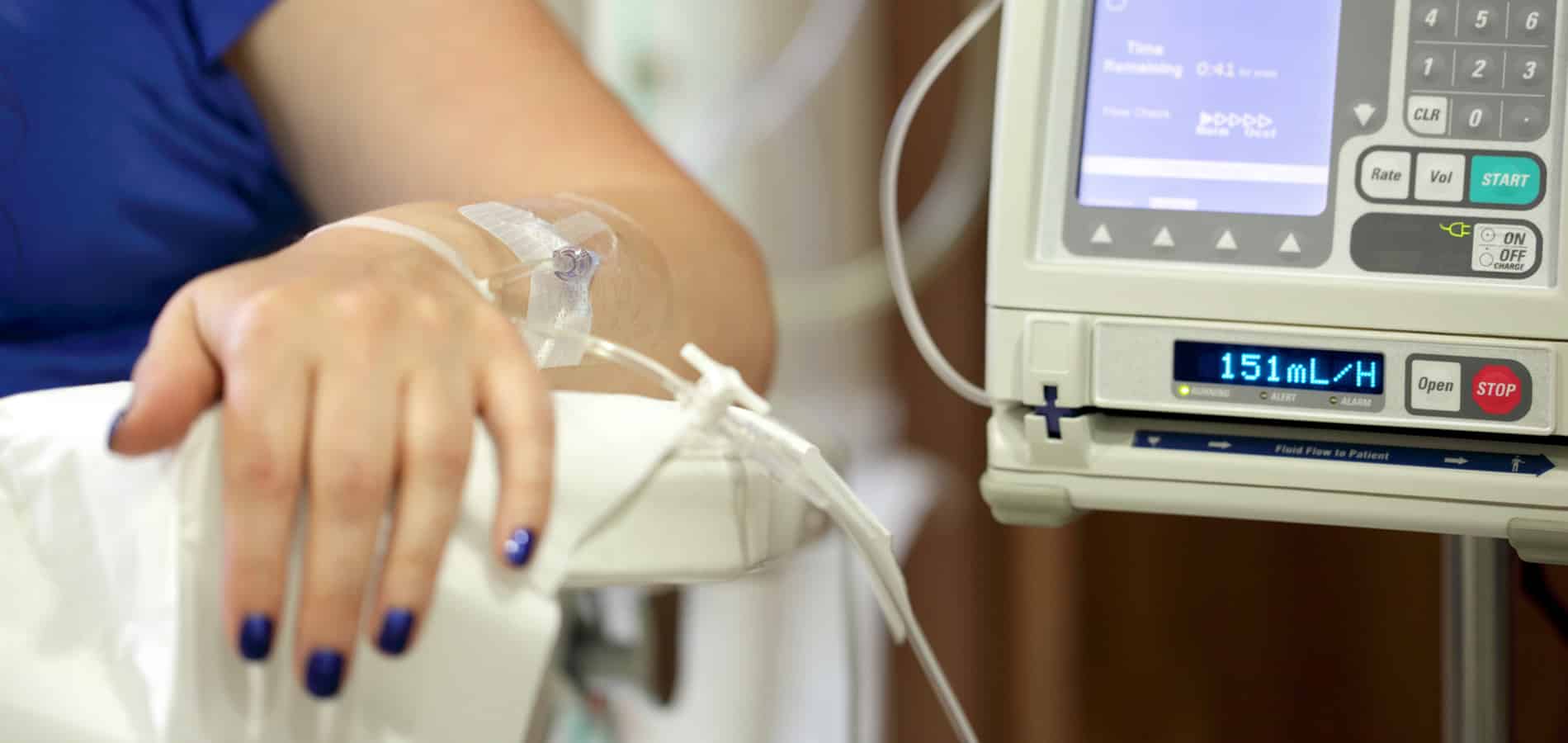
Cytotoxic drugs or cytostatics
Cytotoxic drugs or cytostatics (also cytotoxic chemotherapy) are drugs used to destroy cancer cells. Cytotoxic drugs inhibit cell division and in this way cause cancer cells to die. Cytotoxic drugs are transported in the bloodstream throughout the body.
Cytotoxic drugs boost the outcomes of surgery
Cytotoxic drugs can be used to destroy tumours, boost the outcomes of surgery or radiotherapy, reduce metastases and alleviate cancer symptoms. Cytostatics can be effective outside the primary tumour and also destroy small tumours that have not been detected in tests.
Cytotoxic drugs affect all dividing cells, including those of healthy tissue. But because cancer cells often divide markedly faster than normal cells, they are particularly sensitive to cytostatics. The effects on normal cells are less pronounced and healthy cells also recover faster.
The role of cytotoxic drugs in cancer therapy has decreased slightly with the development of drug therapy. However, they continue to be widely used.
Several types of cytotoxic drugs are used in cancer therapy that together have different kinds of effect. The most usual method is to administer a combination of several different cytotoxic drugs. The effectiveness of chemotherapy depends on the type of tumour, its composition, rate of development and proportion of cells in the distribution stage.
Sometimes, cytostatics are administered as high-dose chemotherapy. This is used in treating leukaemia, some lymphomas and brain tumours in children. At the same time, stem cell transplants are required as high-dose chemotherapy can completely destroy bone marrow. The function of bone marrow can be restored following chemotherapy using stem cell transplants. The stem cells can be the patients’ own or can be obtained from a donor.
Having chemotherapy
Chemotherapy is usually given on an individual basis and according to the stage of cancer distribution. The length of treatment and type of chemotherapy drug used vary. In most cases, the national treatment guidelines provide the context for the use of chemotherapy.
You can take cytotoxic drugs in tablet form or intravenously. Sometimes the drug is administered locally, for instance into the pleura, bladder or spinal cavity. Intravenous treatment is usually given in hospital but after receiving the drip you are able to go home.
Courses of treatment are generally given at 3 – 4 week intervals. In this way the cancer cells do not have time to recover but normal tissue usually does. Chemotherapy requires the close monitoring of blood counts.
Cytotoxic drugs have adverse side effects. However, your functional capacity during treatment is usually good.
Content related to the topic

Cancer pain
Cancer and its treatments can cause many different types of pain. Cancer pain is the most common and most important symptom associated with cancer regarding quality of life. Around half of people with cancer experience pain.
Read article
Cancer symptoms
Cancer has numerous symptoms. It may be asymptomatic for a long time or it may involve only very general symptoms, such as fatigue or weight loss.
Read article
Problems related to eating
Syöpää sairastavalla voi olla ongelmia syömisessä, ja hän saattaa laihtua.
Read article